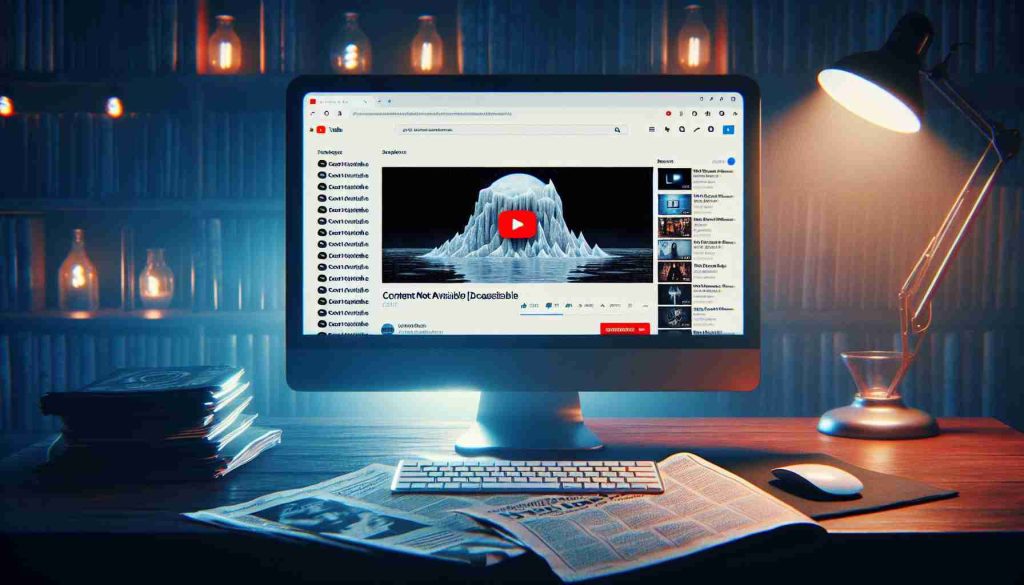The Impact of Music Licensing Disputes: Popular Songs Unavailable on YouTube

YouTube users were left disappointed when they found themselves unable to stream beloved tracks by renowned artists, sparking a wave of frustration across social media.
A legal conflict with music licensing organization SESAC led YouTube to block songs by iconic musicians such as Adele, Kendrick Lamar, Bob Dylan, and Nirvana. The platform displayed a message stating, “This video contains content from SESAC. It is not available in your country,” leaving fans without access to some of their favorite tunes.
SESAC, an acronym for the Society of European Stage Authors and Composers, functions as a performance rights entity akin to BMI and ASCAP. Acquired by Blackstone in 2017, SESAC represents over 15,000 songwriters, composers, and music publishers, controlling licenses for more than 1.5 million songs.
Despite efforts to resolve the dispute, negotiations between YouTube and SESAC reached an impasse, resulting in the removal of SESAC-represented content from the platform in the US. The situation prompted a response from TeamYouTube, explaining that the expiration of the music license agreement necessitated the removal of affected content in compliance with copyright regulations.
As discussions continue between YouTube and SESAC in pursuit of a new agreement, music enthusiasts eagerly await the reinstatement of their favorite tracks on the popular video streaming service.
Uncovering Additional Insights into Music Licensing Disputes and YouTube Restrictions
YouTube’s recent move to block famous songs due to a clash with SESAC sheds light on critical questions and challenges surrounding music licensing disputes affecting online platforms. Let’s delve into the key aspects that further expand on the impact of this issue.
What Are the Main Obstacles in Music Licensing Disputes with Platforms Like YouTube?
One significant challenge is the complex nature of music licensing agreements. Negotiations often involve intricate terms, diverse stakeholders, and evolving regulations, making it difficult to reach swift resolutions that satisfy all parties involved. Moreover, frequent updates in copyright laws and the rise of digital streaming services add layers of complexity to these disputes.
How Do Music Licensing Disputes Impact Artists, Fans, and Online Platforms?
Music licensing disputes not only hinder fans’ access to popular music but also impact artists and content creators reliant on platforms like YouTube for exposure and revenue. Artists may face income losses when their music is unavailable, while fans miss out on the opportunity to enjoy the work of their favorite musicians. Additionally, online platforms risk losing viewership and engagement when major songs are removed due to licensing conflicts.
What Are the Benefits and Drawbacks of Strict Music Licensing Policies?
On one hand, strict music licensing policies safeguard artists’ rights and ensure fair compensation for their creations. By enforcing licensing agreements, platforms can uphold copyright integrity and support creators in generating income from their work. However, excessive restrictions may limit audience reach, stifle creativity, and create barriers to music discovery, ultimately hindering the music industry’s growth and cultural exchange.
In navigating music licensing disputes, striking a balance between protecting intellectual property and enabling widespread music access remains a central point of contention. The ongoing negotiations between YouTube and SESAC underscore the intricate dance between rights holders, online platforms, and music lovers striving for a harmonious resolution.
For further insights on music licensing and copyright issues impacting the digital landscape, visit the official BMI website for comprehensive resources and industry updates.
Stay tuned as the evolving landscape of music licensing continues to shape the availability of popular songs on online platforms, prompting discussions and debates on the intersection of creativity, technology, and legal frameworks.